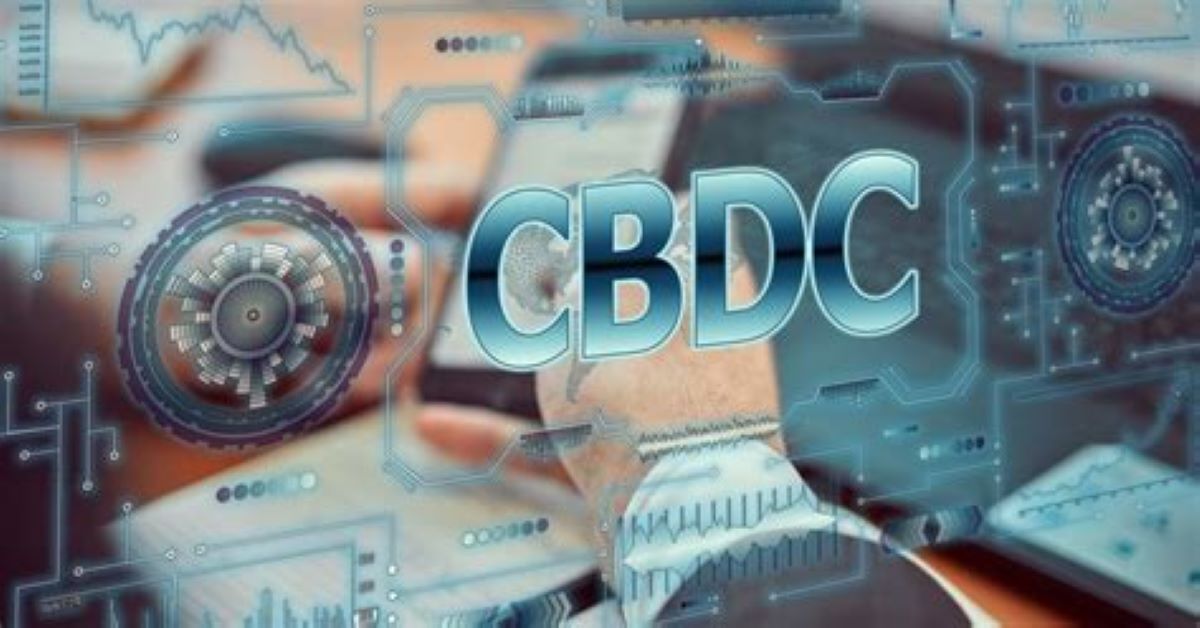CBDCs are dystopian money
If the recent IRS warning about reporting $600 Venmo transactions warmed your Yuletide spirit, the federal government’s next financial surveillance move will create fuzzies all year long. Right now, officials are preparing to surveil everyone’s financial life in real time with the end goal of transferring more American wealth into its coffers. This intrusion on financial privacy and economic liberty is occurring partially in secret and potentially without Congressional approval.
Welcome to the Brave New World of central bank digital currencies (CBDCs).
Unfortunately, this is not the opening of a dystopian novel. Its prospect grows stronger each day.

CBDCs are dystopian following China’s totalitarian system
CBDCs are direct liabilities on central banks. Traditionally, direct access to central bank balance sheet is the purview of financial institutions as most money is privately created by banks lending out customer deposits.
Authoritarian governments, particularly China, are cutting the middleman for political reasons. The Chinese Communist Party (CCP) boasts their digital yuan (e-CNY) will enable further economic control and party discipline.
This power derives from CBDC surveillance capabilities. In blockchain-based cryptocurrencies, “nodes”—people worldwide with as little as a laptop and internet connection—maintain public digital ledgers based on open-source consensus mechanisms. CBDCs, however, have one node: the central bank, and it identifies, monitors, records, and potentially blocks or reverses each transaction.
When fully implemented, the e-CNY will augment the CCP’s social-credit system, which grants or removes privileges based on party loyalty. They are also testing negative interest rates as an economic-stimulus tool. Spend your e-CNY or watch it disappear in real time.
Don’t think it could happen here? It’s already started.

CBDCs are dystopian surveillance tools
American’s non-cash transactions are already surveilled by banks and those over $10,000 are reported. The government justifies this as a needed bulwark against financial crimes and terrorists under the banner (AML/CFT). Last year, Canadian Prime Minister Justin Trudeau used AML/CFT laws to freeze bank accounts of peaceful truckers protesting COVID lockdowns. Had the truckers had only CBDC holdings, Trudeau could have limited any spending or imposed instant confiscation or fines.
Proponents insist CBDC design will shield Americans from such abuses. The Federal Reserve would likely include protections as Chair Jerome Powell has assured. But context is needed.
As researcher Natalie Smolenski wrote for the Bitcoin Policy Institute, when government functionaries speak of “privacy” in the CBDC context they don’t mean from the state. “Rather, the state is presumed to be an essentially good and trustworthy overseer of markets at every scale, including at the level of individual transactions—and a desire for privacy from the state is implicitly equated to criminal intent.”
CBDCs cede all control of money to the government
CBDCs place American’s financial sovereignty at the mercy of (at times) partisan bureaucrats at an historically precarious time. Post-COVID, government balance sheets are bleak. Global debt-to-GDP ratio had risen 356 percent by the end of 2021. CBDCs offer a way out.
With real-time access to the total money supply, officials could implement any number of policies deemed in the public interest or necessary for the next crisis. This could include negative interest rates, instant tax collection for every transaction, restrictions on the purchase of disfavored products like firearms, cigarettes, or sugary foods, or carbon-based limits on travel.
The bureaucrat’s mind races.
Equally distressing is the opaque way officials are preparing to dump CBDCs on the public. Whilst academics openly build the technical foundation at the New York Fed and MIT, the legal groundwork remains shrouded.
In January the Fed stated it would not move forward without support from all stakeholders including “ideally” a Congressional enabling law. But in October, Rep. Tom Emmer (R-MN) claimed the Department of Justice had devised a secret CBDC Congressional bypass.
Upcoming House investigations may shed light on this. But it is telling how hard the government is pushing for something Americans do not need. As I’ve written extensively, privately issued, asset-backed stablecoins—digital assets pegged to a monetary value, mostly the U.S. dollar— already provide benefits proponents claim require CBDCs, including financial inclusion and smoother cross-border payments.
CBDCs will kill political dissent
Political dissidents and desperate people in Hong Kong, Argentina, Venezuela, and Ukraine use stablecoins. They have also performed remarkably well during this year’s many crypto crises. They could eventually supply the world’s poor and oppressed a pathway to survival and freedom.
Conversely, CBDCs yield ever more power and control to compromised and cash-starved governments. Let’s make our new world more free and less Brave. Say no to CBDCs.
By Jossey PLLC
A version of this article originally appeared in the Daily Caller on December 12, 2022 https://dailycaller.com/2022/12/12/cbdc-government-overreach-federal-reserve/








